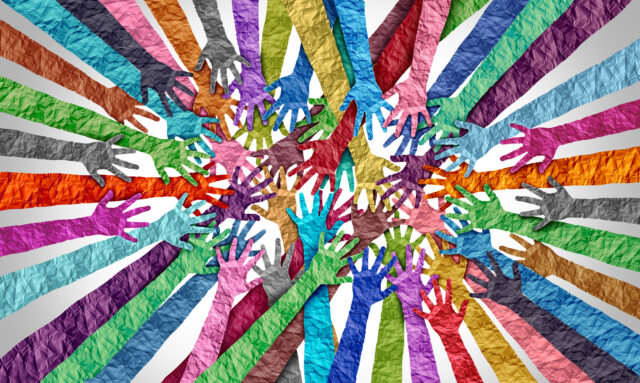
On Culture Blog / Nov 3, 2025
Why “Unity” Is More Contentious Than You Might Think

Americans are deeply concerned about political division. According to new national polls, worries about polarization and division have overtaken concerns about almost every other issue—from immigration to inflation to the state of democracy. It’s no wonder that everyone is calling for unity.
In our own ongoing culture tracking research, we’ve seen something similar. Yearning for a more “united” country has grown stronger and stronger over the last five years, across demographic groups and ideology.
But what does “unity” really mean to people? Understanding the mindsets that shape our thinking lets us dive under the surface of those poll numbers. Our research shows that people have two competing—and very different—ways of thinking about unity:
- Unity through progress: In this forward-looking mindset, unity can only happen if we grapple with and address longstanding injustices in our society. We can only move forward together as a united country if we take on inherited injustices.
- Unity through restoration: In this backward-looking mindset, unity is achieved by returning to some imaginary past “when we were a more united country.” Importantly, the idea of restoring the past carries with it the idea that we need to restore racial, gender, and other hierarchies. When people use this mindset to make sense of the world, they see attempts to address injustice, along with expression of “nontraditional” identities, as the cause of division.
“You don’t have the same black and white rules that we used to have before. Everything is different, from how we raise our children to the dynamics of our families. Even the small things we took for granted, like gender identity. That’s a very complicated and very, uh, sensitive topic now. Whereas it wasn’t a concept before… It’s just, it’s very complex right now. There’s no one solid idea about society right now. It’s just chaos.”
(Research participant using the ‘unity through restoration’ mindset, February 2024)
The quote above illustrates how this mindset often comes through in our focus groups: Division is understood as “chaos” and a lack of “one solid idea about society,” and that division is caused by discussion of gender identity.
Quantitative analysis of our tracking survey data has found that out of all the mindsets we track (including cross-cutting, deeply engrained mindsets like individualism), unity through restoration is the mindset with the single most powerful influence on authoritarian attitudes. This makes sense: If unity depends on restoring hierarchies, we need someone to put people in their place and restore order.
Both the unity through progress mindset and the unity through restoration mindset are widely available across demographic groups, though unity through restoration is held more strongly by Republicans and people with less education.
What does this mean for our communications?
First, and most importantly, it means that we need to be very wary of gesturing to the importance of unity and leaving things at that. Social media posts that simply wave to concepts like “our divided country,” or “the importance of unity in this moment” might end up doing more harm than good—they might inadvertently cue and strengthen the unity through restoration mindset.
But we do have another mindset available to us to think about unity—the unity through progress mindset. We can’t (and shouldn’t) cede the concept of unity. But when we want to talk about unity and division, we need to be intentional. We need to do what we can to cue that unity through progress mindset.
Here are 3 strategies to do that:
- Link divisions to injustice.
What this looks like: One reason our country is so divided is because our system is rigged to give wealthy white power over the rest of us.
What this looks like: Longstanding injustices fuel division in our country.
- Explain how addressing injustices can bring us together.
What this looks like: If we really want to heal the divisions in our country, we need to make sure that everyone in our society has the power to shape their own lives.
What this looks like: To be a more unified country, we need to come together and demand policies that address injustices and consider the needs of all neighborhoods and communities.
- Be careful of framing that suggests we need to “go back” to some other time.
When we talk about how politics “used to be more civil,” that the news “used to be” less biased, or that we “used to be” in dialogue with each other before social media, we risk cueing the unity through restoration mindset.
More research is needed to know the most effective ways of navigating conversations around unity. In the meantime, for more on these competing mindsets see our recent report: Whose Unity? Which Diversity? Cultural Mindsets around Pluralism in the United States. And for a vivid illustration of what it can look like to contest understandings of unity, check out Ta-Nehisi Coates on the Ezra Klein show: Ta-Nehisi Coates on Where to Draw the Line.
Issues: Government and Democracy
Countries: United States